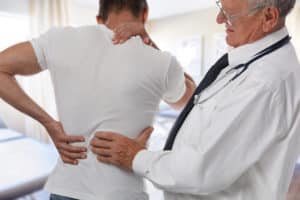What Are Non-Economic Damages?

Non-economic damages, also called general damages, could make up a large part of your settlement or damage award. These damages include all of the ways that your accident reduced your quality of life.
Non-economic damages seem mysterious to most accident victims. But these damages compensate you for real, albeit difficult to quantify, losses in your life.
Here is an overview of non-economic damages and how a jury or claims adjuster can calculate an amount for them.
Table of Contents
What Do Non-Economic Damages Cover?

Non-economic damages are real. However, insurers want you to think that pain and suffering do not exist, and asking for non-economic damages amounts to profiteering.
Non-economic damages are also called general damages because they exist in virtually every case. Under California law, non-economic damages cover “subjective, non-monetary losses.” These damages are subjective because they tie to your unique circumstances. They are non-monetary because they compensate you for the impact your injuries have on your life that you cannot measure financially.
Some examples of non-monetary losses you might experience after an accident include:
Physical Pain
Physical pain can have a profound effect. You might change your routine to avoid pain or lose the ability to perform necessary tasks, like standing or walking. You might even develop emotional or mental issues as you despair over your pain.
Mental Suffering
After an accident, you might suffer from a range of mental and emotional issues, including:
- Post-traumatic stress disorder (PTSD)
- Depression
- Anxiety
- Grief
The cost of treatment and medication for these conditions falls within your economic damages. The anguish you experience from these conditions falls within your non-economic damages.
Inconvenience
Getting injured will cause you to alter your routine. For example, PTSD after a car accident might prevent you from driving. Or you might need to have a friend or family member help you around the house after you break your leg.
Inability to Perform Tasks
When you suffer mental or physical injuries, you might lose the ability to perform tasks necessary for:
- Daily living, like showering and dressing
- Work
- Recreation and hobbies
The loss of your ability to perform these tasks has some intangible value to you. For example, if you cannot work, you will not earn income (economic damages). But you may also lose some sense of purpose and self-worth (non-economic damages).
Reduction in Enjoyment of Life
Your injuries may diminish your enjoyment of life. Having injuries hanging over you may cause you concern over your health and finances. As a result, you will have less time and energy to devote to those things that bring you enjoyment and happiness.
Calculating Non-Economic Damages
In California, juries exercise their judgment to award a reasonable amount of non-economic damages based on the evidence and the law.
Juries use evidence of the severity and duration of your injuries to determine a fair amount for non-economic damages. More severe and longer-lasting injuries cause more non-economic harm.
Evidence you can use to prove the impact of your injuries includes:
- Medical records
- Mental health therapy or counseling notes
- Pain prescriptions
- Testimony from family members, friends, and co-workers
Based on this testimony, the jury can calculate a fair non-economic damage award for you.
Two Ways to Calculate Non-Economic Damages
California has no fixed standard for calculating non-economic damages. But your lawyer can suggest two different frameworks that can guide the jury in its deliberations.
Per Diem Method
In the per diem method, the jury assigns a daily value to your non-economic losses. Severe injuries would justify higher daily values, and minor injuries justify lower daily values.
For example, the jury might determine you have $100 per day in non-economic losses. The jury then multiplies the daily value by the number of days you suffered from your injuries. If you suffered from your injuries for a year, the jury multiplies $100 per day by 365 days, and you receive a non-economic damage award of $36,500.
Multiplier Method
In the multiplier method, the jury assigns a multiplier between 1.5 and 5.0 based on the severity and duration of your injuries. Greater severity and duration will justify a higher multiplier. The jury multiplies your economic losses by the multiplier to get your total damage award, including your non-economic damages.
For example, suppose that you have $15,000 in economic losses like medical bills and lost income. The jury assigns a multiplier of 3.0 based on your evidence of non-economic losses. This gives a total damage award of $45,000.
Ways to Boost Your Case for Non-Economic Damages
A few ways you can improve your case for non-economic damages include:
- Talking to your doctor about your pain
- Visiting a counselor or therapist about mental or emotional issues
- Keeping records of all of your prescription and over-the-counter medications
- Discussing your problems with your family, friends, and co-workers
- Asking for help when your physical or mental disabilities limit you
Contact a Knowledgable Personal Injury Lawyer in Los Angeles, CA
An experienced personal injury lawyer in Los Angeles can help you find more ways of documenting your non-economic damages. To discuss the non-economic damages you might receive in your case, contact now the M&Y Personal Injury Lawyers for a free consultation.
